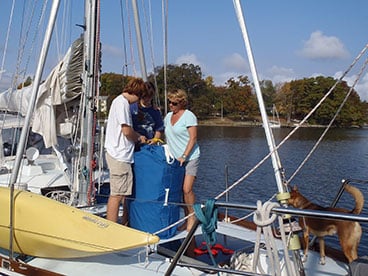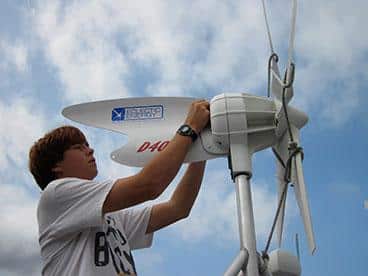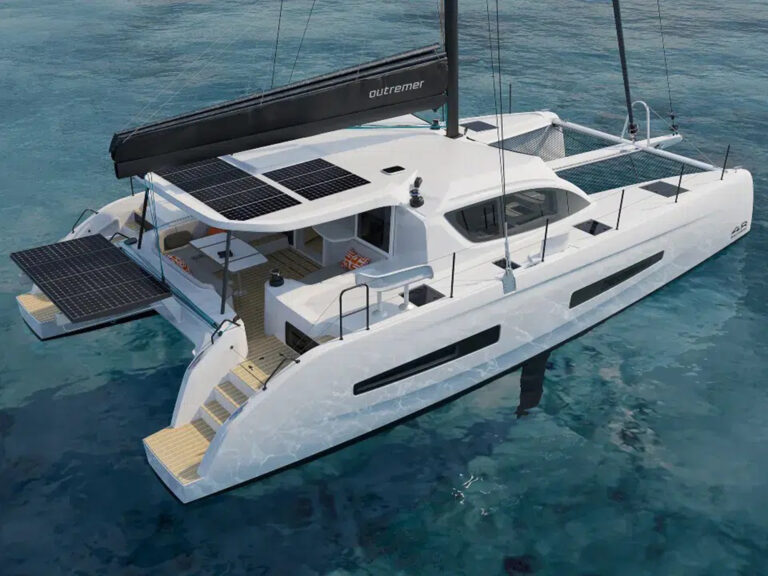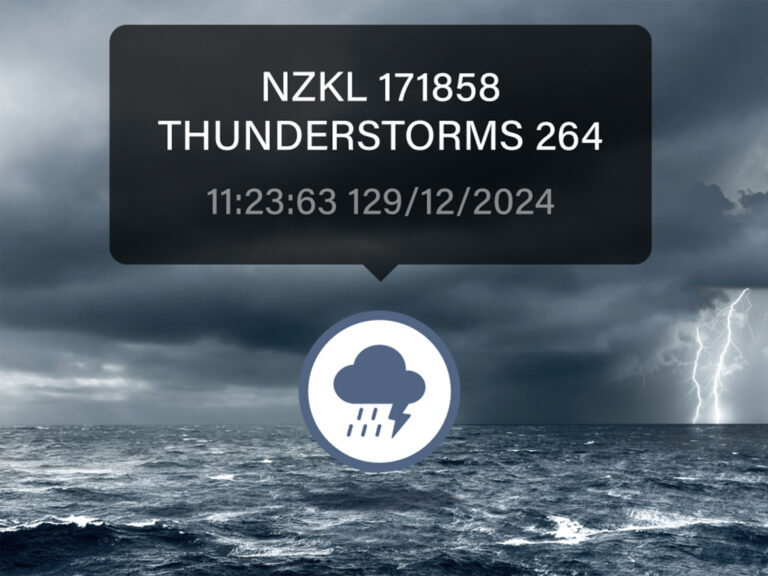
Clarke family preparing for Hurricane Sandy
“Keep an eye on this one.” Those had been the words of my husband, Johnny, just before he headed offshore from the Chesapeake en route to Florida aboard a catamaran he was delivering with our friend Kim. On a schedule, they were jumping a window to get around Cape Hatteras and as far south as possible well before the depression that would become Sandy started its turn north.
“I’m on it. Don’t worry.” Those were my words as I blithely reassured him that the weather brewing in the Caribbean was already on my radar and that all would be well. Three days later, that weather had become Hurricane Sandy, Johnny and Kim were holed up in Charleston babysitting their charge, and my personal radar was set at DEFCON One. While most of the models were showing the storm going north of Annapolis, where Osprey was, I was listening carefully to our weather guru, Chris Parker; the words he was choosing tapped into some gut feeling to which I couldn’t put a name. The dock where Osprey nestled was entirely exposed to the northeast; Sandy would eat her for lunch if the winds got much above 30 knots, not to mention if the storm delivered a surge. Our friends who own a marina in a protected creek off the Patapsco River had a slip ready and waiting for us. There was just one thing: The kids and I had never moved Osprey on our own before.
So began a graduation of sorts, the culmination of four years of full-time sailing that had, over time, honed our family of four (and one dog) into a team that truly has become far more than the sum of its parts. Until now, of course, we’d always worked together, with Johnny at the lead. But now the lead was stuck in Charleston. No big deal, I told myself. All I had to do was safely move Osprey about 25 miles up the Chesapeake, drive her into a slip for the first time ever by myself, then prep her and get us through what would become the worst storm to hit the U.S. East Coast since 1938. No pressure.
“Want me to drive us off the dock?” our son, Kaeo, asked me, after he and his sister Kailani had already secured the kayak and the dinghy and readied the rest of the deck for travel. For Kaeo, who started this cruising journey as an 11-year-old prone to seasickness and fearful of any seas much bigger than six feet, this was just another delicious adventure that gave him a chance to shine. Prepping also meant checking the engine oil and making sure all the valves were in their proper positions for travel. Though his dad coached him through some of the process over the phone, the reality is that he’d stepped into First Officer shoes some time ago and was already completely dialed in to most of Osprey’s systems.
“Absolutely,” I said. “Get her out of the creek, and I’ll take her from there.” It was an easy trip up the bay, and it was made easier by the hot spiced cider that Kailani brewed up on the stove and the pleasant chat I had with a southbound tugboat beneath the Chesapeake Bay Bridge. By the time we got to Oak Harbor Marina, on Rock Creek, I was ready to hand the wheel over to J.B., the marina’s yard manager. I’d been trusting that he’d hop aboard and drive us in, but as I idled Osprey nearby, J.B. stood at the end of the finger pier with Ken, the marina’s owner.
“Come on!” he shouted. “Stick your nose in here! We’ll catch ya!” In for a penny, in for a pound, I thought; don’t go all girlie now. Taking a quick assessment of the little cross breeze and how it would set me into the pier, I ever so gently nosed Osprey into the slip while the kids perfectly managed the lines and fenders. And just like that, we were in, our first solo flight a success.

| |Kaeo Clarke tying down a wind turbine.|
For the rest of the afternoon and the next day, we watched the weather and stripped the boat, lowering and bricking the headsails, wrapping the main, tying off the wind generators, and taking anything that could fly off the deck and storing it ashore. The kids launched the dinghy, attached and fired up the engine, and ensconced it safely inside the marina along the bulkhead. With the help of our friends Mike and Roberta from Celilo, who’d moved to the marina with us, we set a storm anchor off Osprey’s beam, where I thought the worst of the winds would hit. We doubled the lines, filled the water tanks, and topped off the gas cans.
My efforts to get the kids to go visit friends for the duration fell on deaf ears. We were a team, a family, and a crew. Besides, they weren’t about to let me have all the fun. And so I stood and watched the moon and waited, feeling a most unlikely emotion at that moment: pride in a small accomplishment, contentment at an unexpected silver lining.
The Clarke family is currently aboard Osprey on the Chesapeake.
Click here to read Ed Eisenberger’s “How to prepare your boat for a storm”








